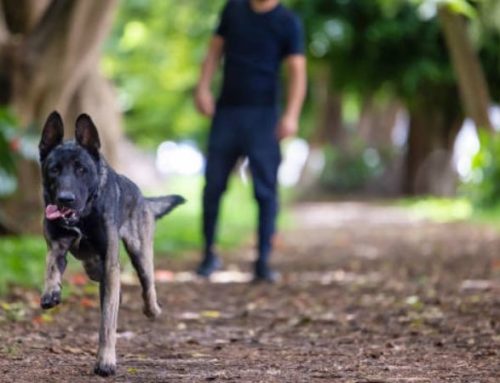You’re rushing through your morning, ready to start the day, when one last chore catches you off guard the litter box. As you look inside, you notice your cat’s stool is coated with a slimy yellowish layer or even streaked with blood. It’s alarming, and questions immediately come to mind.
Don’t worry—Nexus-Pets’ guide on Cat Pooping Blood and Mucus will help you understand what’s happening and what steps to take to keep your cat healthy.
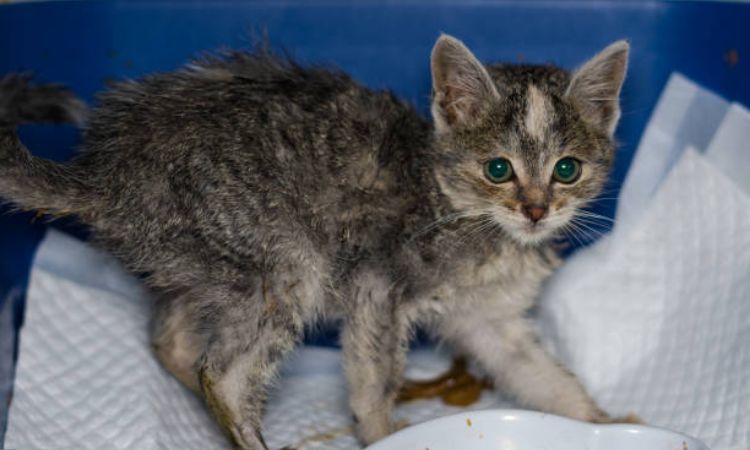
What Does Blood or Mucus in Cat Stool Look Like?
Differentiating Blood in Stool
Bright Red Blood (Hematochezia): Bright red blood in your cat’s stool usually indicates bleeding in the lower digestive tract, such as the colon or rectum. This is often caused by irritation, inflammation, or minor trauma near the anus. You may notice red streaks on the surface of the stool or smears on the litter box.
Dark, Tarry Blood (Melena): Dark or black, tarry stool points to bleeding higher up in the gastrointestinal tract, like the stomach or small intestine. The blood has been partially digested, giving it a darker appearance. This can signal more serious underlying conditions and warrants prompt veterinary attention.
Identifying Mucus in Stool
Mucus appears as a slimy, jelly-like coating on the stool or mixed within it. Normally, a small amount of clear or pale yellow mucus is produced by the intestines to help stool pass smoothly. However, excessive mucus, changes in color, or mucus accompanied by diarrhea, very firm stools, or blood can indicate irritation, inflammation, or another gastrointestinal issue that requires veterinary evaluation.
Immediate Steps to Take
1. Observe and Document
The first step is careful observation. Take note of the following:
- Appearance and Amount: Record whether the blood is bright red or dark/tarry, and whether the mucus is a small coating or a large, slimy amount.
- Behavioral Changes: Monitor your cat’s appetite, energy levels, and litter box habits. Even subtle changes can provide important clues for your veterinarian.
- Visual Record: If possible, take a clear photo of the stool to show your vet. This can help them identify the severity and possible cause of the issue.
2. Contact Your Veterinarian
Blood or mucus in your cat’s stool is always a sign that something is affecting your cat’s gastrointestinal tract. Professional evaluation is essential.
- Schedule an Appointment Promptly: Call your veterinarian as soon as possible to discuss your observations and arrange a visit.
- Avoid Self-Diagnosis: Do not try to treat your cat at home. Over-the-counter remedies, human medications, or guesswork can worsen the situation.
Early veterinary attention can prevent minor issues from escalating into serious health problems. Your careful documentation will help the vet diagnose the underlying cause quickly and accurately, whether it’s dietary, infectious, parasitic, or a more serious condition.
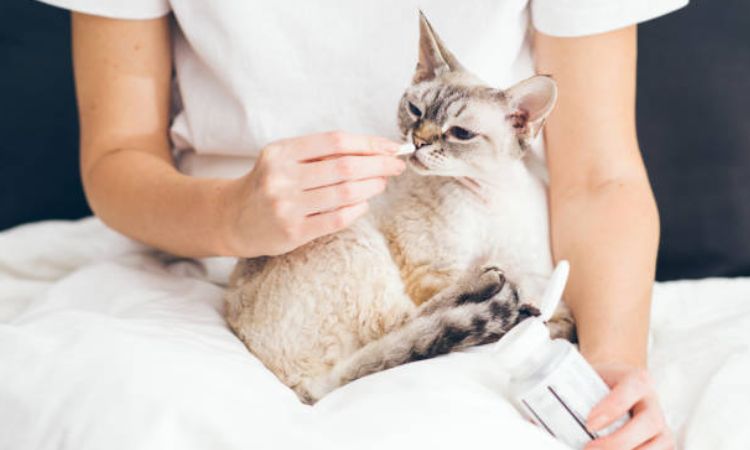
Common Causes of Bloody or Mucus-Filled Stool
Blood or mucus in a cat’s stool can result from a variety of causes, ranging from minor digestive upset to serious medical conditions. Understanding the potential triggers can help you identify issues early and seek veterinary care promptly.
1. Dietary Issues
- Sudden Food Changes: Abruptly switching a cat’s diet can upset its sensitive digestive system, sometimes leading to diarrhea, mucus, or blood in the stool. Always transition new foods gradually over several days to allow the gut to adjust.
- Food Allergies or Intolerances: Certain ingredients in cat food—such as specific proteins or additives—can trigger inflammation in the intestines, resulting in mucus-coated or bloody stools.
2. Internal and External Factors
- Intestinal Parasites: Parasites like hookworms, roundworms, Giardia, and coccidia can damage the intestinal lining, causing irritation, mucus, and bleeding. Even indoor cats can be affected, which is why regular deworming is essential. Some parasites are zoonotic, meaning they can pose a risk to humans as well.
- Stress and Anxiety: A cat’s gastrointestinal health is closely tied to its emotional state. Stressful events—such as moving, loud noises, travel, or boarding—can trigger colitis (inflammation of the colon), leading to bloody or mucus-filled stools. Stress-related gastrointestinal upset may also present with straining, watery stool, or bloating.
3. Medical Conditions
- Inflammatory Bowel Disease (IBD): A chronic condition causing persistent inflammation of the digestive tract. Cats with IBD often have intermittent diarrhea, mucus, and sometimes blood in their stool.
- Bacterial Infections: Infections from bacteria like Salmonella can irritate the intestines, leading to diarrhea and blood in the stool. These may also be accompanied by vomiting, lethargy, and appetite loss.
- Foreign Bodies: Cats may ingest non-food items (like string, small toys, or bones) that can cause intestinal blockages, irritation, or tears, resulting in bloody or mucus-laden stools.
- Tumors or Polyps: Abnormal growths in the intestines can damage the intestinal lining and lead to bleeding. Early detection is critical, as some growths may be cancerous.
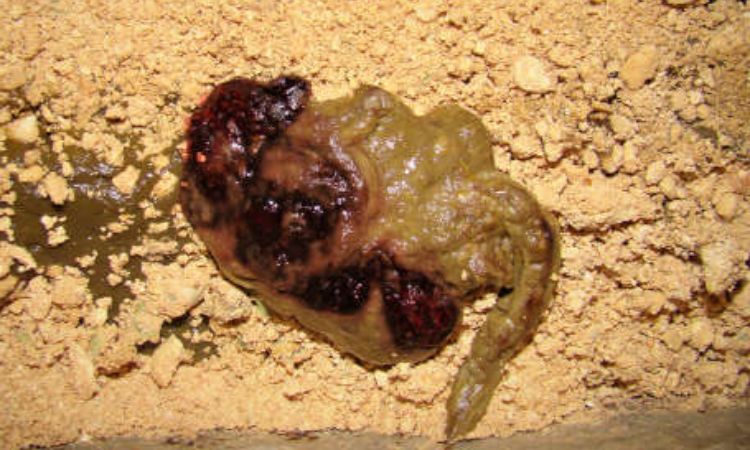
What to Expect at the Vet’s Office
When you bring your cat in for mucus or blood in the stool, your veterinarian will perform a systematic evaluation to identify the underlying cause and recommend appropriate treatment.
The Diagnostic Process
- Fecal Exam
- A small stool sample (about 2 inches) is examined under a microscope.
- Checks for intestinal parasites, bacterial infections, and signs of inflammation.
- Abnormal mucus, blood, or unusual stool consistency helps guide further testing.
- Physical Examination
- The vet will palpate your cat’s abdomen and check the overall body condition.
- Examines for tenderness, blockages, or other abnormalities in the gastrointestinal tract.
- Blood Work
- Helps detect infections, inflammation, anemia, or underlying organ issues such as kidney or liver disease.
- Provides insight into how your cat’s body is responding to the gastrointestinal issue.
- Imaging
- X-rays or ultrasound may be used to detect foreign objects, tumors, or structural abnormalities in the digestive system.
- Imaging is especially important if constipation, vomiting, or severe diarrhea is present.
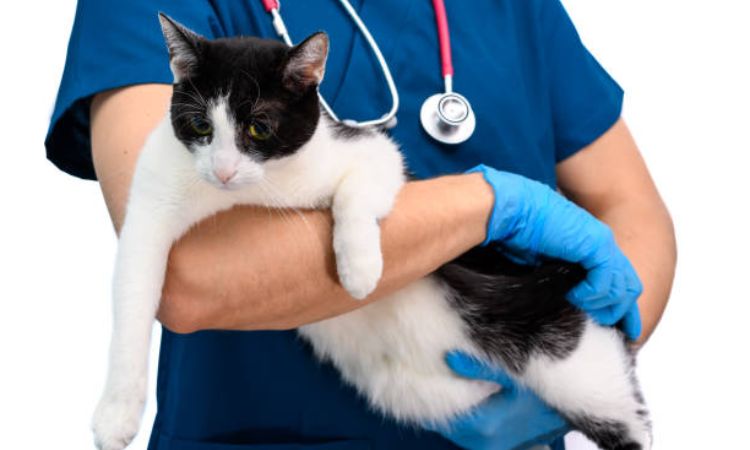
Common Treatment Options
- Dietary Changes
- Prescription diets may be recommended to rule out food allergies or sensitivities.
- Special formulas can help soothe the digestive system and reduce inflammation.
- Medication
- Antibiotics: To treat bacterial infections if present.
- Dewormers: For intestinal parasites such as Giardia or hookworms.
- Anti-inflammatory drugs: To reduce gut inflammation in cases of IBD or colitis.
- Fluid Therapy
- Administered to cats suffering from dehydration due to diarrhea.
- Helps restore electrolyte balance and overall hydration, supporting recovery.
The vet’s office provides a structured approach—examining stool, checking the cat’s physical condition, running lab tests, and using imaging when necessary. Combined with targeted treatment, this process ensures the best chance for your cat to recover quickly and return to normal litter box habits.




